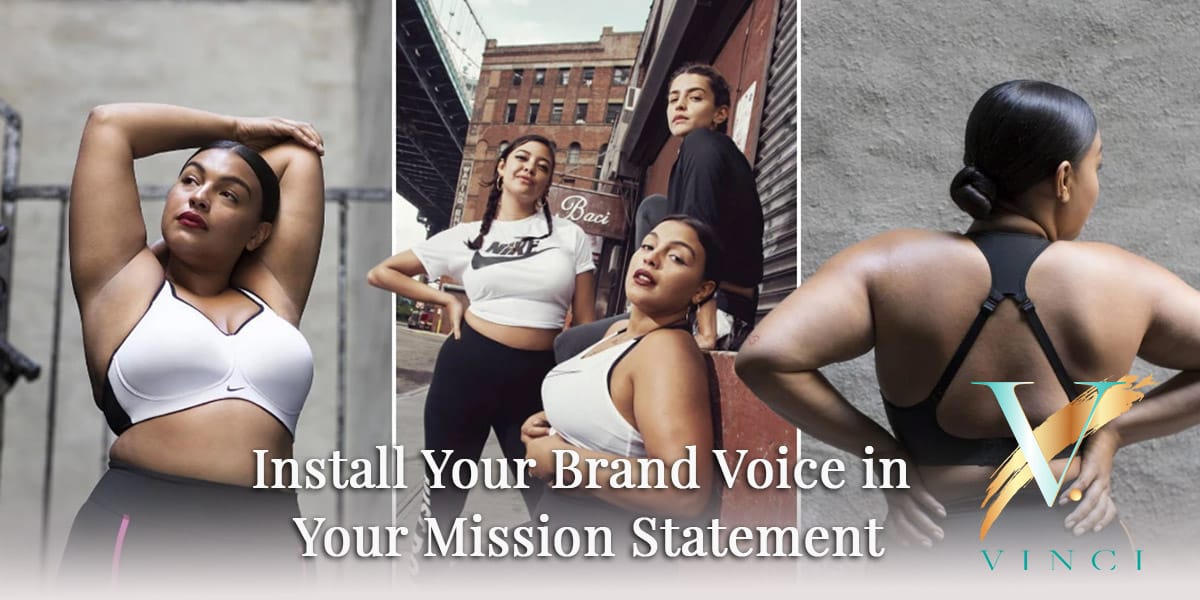An integral part of developing your brand is creating a voice to go with it. Unfortunately, companies get so caught up in logos, fonts, and color palettes that they can lose sight of their voice’s importance to their potential audience. Logos and fonts create a visual image for consumers, but the brand voice tells them who you are and makes that personal connection. Developing the brand voice starts with identifying your audience and adapting to meet their expectations.
What is Brand Voice?
If you consider the logo the face of your brand, the voice is its personality. Brands define their voices in the way they communicate. It’s in the consistent language they use in all forms of communication, from internal employee handbooks to social media posts.
Brand voice can sound young, it can sound rich, or it can sound caring. Brands create their voice based on their target audience.
Consider Harley-Davidson. Over the years, this motorcycle pioneer has developed a reputation of being strong and rugged with just a touch of bad boy. They express that with some of their tag lines:
- Resistance is Futile
- Grab Life By the Bars
How about Coca-Cola? Since their iconic commercial stated they’d like to teach the world to sing, this brand’s voice has been one of friendship and positivity. They continue to reflect that in their modern communication with tag lines such as “Refresh on the Coca-Cola side of life.”
Brand voice isn’t just tag lines, however. Companies reflect the same personality in every form of communication. For example, anyone that has worked for Walt Disney can tell you that from day one, they immerse their cast members in the brand voice with classes they call Traditions.
Why Does Brand Voice Matter?
 Brand voice matters for the same reason logos do – it makes the company recognizable. The two go hand-in-hand to paint a picture that will stick in the minds of consumers. The market is full of companies, and most are not that unique. They all build the same products or offer the same services. However, the brand is unique, and voice plays a significant role.
Brand voice matters for the same reason logos do – it makes the company recognizable. The two go hand-in-hand to paint a picture that will stick in the minds of consumers. The market is full of companies, and most are not that unique. They all build the same products or offer the same services. However, the brand is unique, and voice plays a significant role.
How to Develop a Brand Voice

Brand voices grow from within, so a mission or value statement is a practical starting point. This sends a message not only to potential customers but to employees as well.
Install Your Brand Voice in Your Mission Statement
The mission and value statement lays the brand voice out for employees in onboarding documents. It then reflects that voice again on the brand website for consumers to see. For instance, Nike’s mission statement is:
“Bring inspiration and innovation to every athlete in the world.*
*If you have a body, you are an athlete.”
This statement establishes the company as inspirational and innovative. It also states that they are nonjudgmental and see everyone as equal. Their iconic tagline: “Just do it,” reflects that same tone.
Do Your Marketing Homework

Your brand voice needs to reflect the expectations of your audience. To make that work, you need to understand them. If your voice doesn’t resonate with your audience, it will not work to build recognition for the company or product.
Marketing professionals create personas for this reason. They want to paint a picture of their buyer to ensure everyone is on the same page with the brand voice. If the buyer persona is a business professional, you will use more business-forward language. The voice changes if the persona is a soccer mom or high school senior.
Getting to know the brand audience also means understanding where they go to learn about products and what social media platforms they frequent. Entrepreneurs trend toward LinkedIn while teens love the humor of TikTok. Creatives might gravitate more towards Instagram or Pinterest.
Look at Your Marketing History

Looking at what works and doesn’t can provide insight into your brand voice. Look for places your voice might be inconsistent. What was the tone of the campaigns that performed the best? What was the tone of the ones that saw little activity?
Also, audit your current communications looking for ideas for your brand voice. Perhaps it is fully developed, and you don’t realize it. If you see consistency in tone and language, you can define the voice from there, especially if it works. If you see consistency and struggle to leverage customers, it might be time to rebrand and change your voice.
Make a List of What You Want Your Voice to Reflect

What kind of voice do you want? Do you want the brand to be thought of as edgy or funny? Are you interested in social concepts? What does that say about your voice?
Businesses that sell primarily to professionals don’t want to come off as unsophisticated. If they want humor, it should be intellectual. On the other hand, if you are selling t-shirts, you have more options.
Make a List of Things to Avoid

Also, consider what you don’t want for your brand voice. If your audience is hip and young, then you would probably stay away from more of a country or southern tone. You won’t use surfer language if your primary business interest is in NYC.
Once a brand voice is defined, aligning it with all your internal communications and marketing materials is next. It might be necessary to train current employees to help them better understand the voice. They should reflect that voice anytime they interact with potential or existing customers to help make it recognizable.
Consider Hiring an Expert
Whether you are struggling to tie your brand voice down or can’t seem to implement it successfully, then turn to a professional to get you there. Content strategists and marketing experts know how to build a voice that reflects your brand and integrate it into your other marketing assets, such as your website, blogs, and social media. Connect with our marketing specialists at Vinci Digital today to learn more about brand voice and how we can help you find yours.













